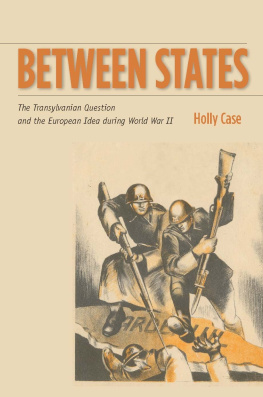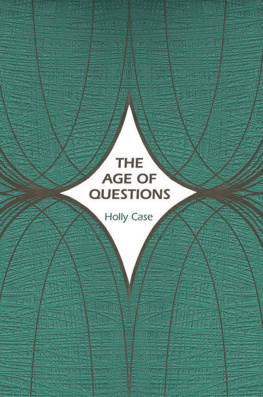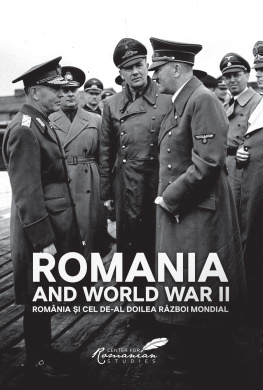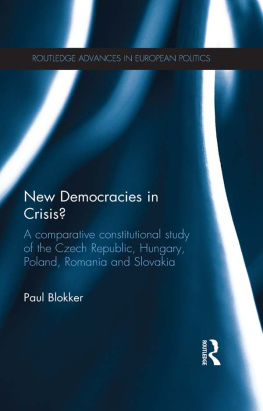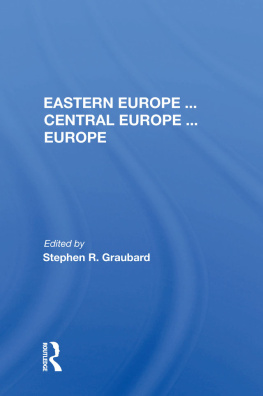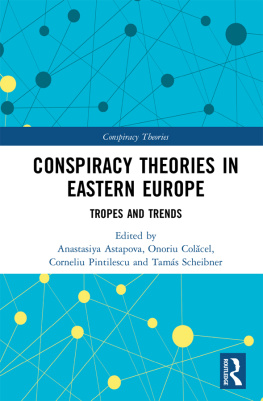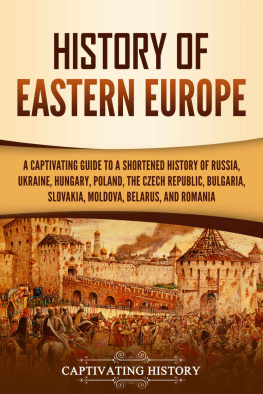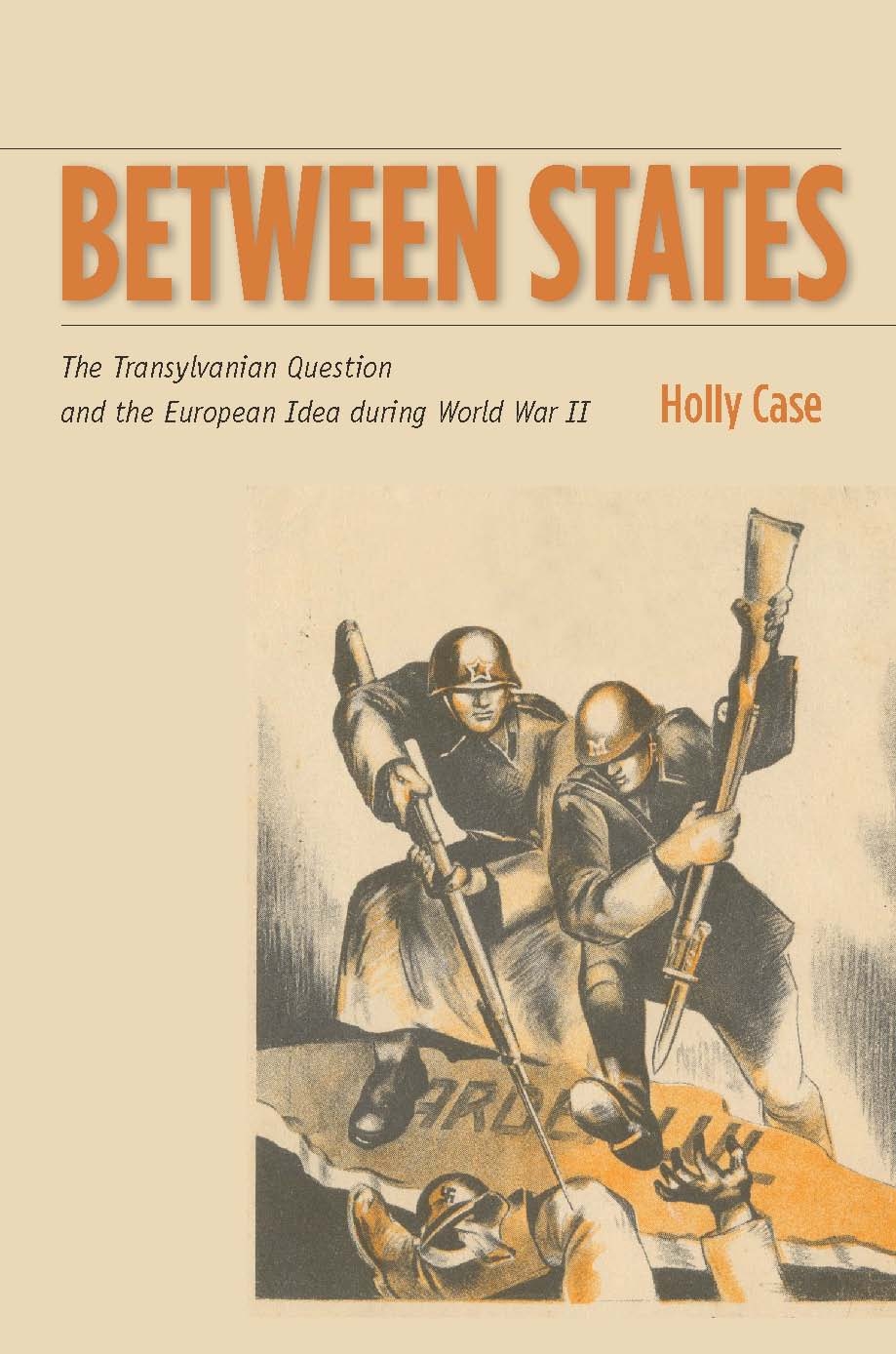Acknowledgments
I owe an enormous debt of gratitude to many people for their good nature, support, and critical readings of this work at various stages. Although this book bears only the faintest resemblance to my doctoral dissertation, without that critical first step I most certainly would not have been able to write this book. I am therefore very thankful to my mentors at Stanford University, including dissertation committee members Amir Weiner and Paul Robinson, as well as James Sheehan, Aaron Rodrigue, Katherine Jolluck, the late Wayne Vucinich, the kruzhok, and Stanfords Center for Russian, East European and Eurasian Studies. My other Stanford debts are to my dear friends Brett Whalen, Caitlin Murdock, and Randall Harp, first-rate study and conversation partners. But the one person who was there with me every step of the way, and continues to be my intellectual lifeline and mentor is Norman Naimark. No amount of thanks or praise could do justice to all he has done for me. When I first met him in person, he told me he would read the thesis only once. So far he has overshot that estimate by a factor of four, not to mention all the bits and pieces he has read at various stages, the countless recommendations he has written, the greater and lesser professional cares he has addressed, opportunities he has provided, and successes he has facilitated. There is, I think, no rarer combination of historical acumen and intellectual generosity than he.
I also had the good fortune of having a second mentor in the field in the person of Istvn Dek, who has nudged me along since the first nervous letter I sent him before applying to graduate school, and who has demonstrated to me what being a historian looks like. I also owe a great deal to Jeremy King, who has provided distance mentorship at so many critical moments in my career and whose work I admire immensely. Special thanks are similarly due to Omer Bartov and Rogers Brubaker for their advice and support, as well as to Mark Mazower for his careful reading and insightful comments on drafts of this project.
To my colleagues and the staff of the Department of History at Cornell University who gave me the time and the space to write this book to my satisfaction I am extremely thankful. This applies especially to my colleagues Vicki Caron, Barry Strauss, Mary-Beth Norton, Valerie Bunce, Peter Katzenstein, and my faculty mentor, Mary Roldan, as well as to members of Cornells Write Club, particularly Ed Baptist, John Parmenter, Jason Smith, and beloved friend Suman Seth. Above all, however, I want to thank Isabel Hull and Peter Holquist, brilliant historians, great friends and mentors, constant advocates.
My institutional debt to Cornell is also considerable. Over the past four years I have received research funding from the Presidents Council of Cornell Women Affinito-Stewart Faculty Grant, Junior Faculty Research Grant from the Institute of European Studies, Cornell Universitys Institute for the Social Sciences Small Grant, Cornell University Deans Grant, and Cornell University Einaudi Summer Research Travel grants. Furthermore, the publication of this book was aided by the Hull Memorial Publication Fund of Cornell University. In addition to support I received from Cornell and Stanford, I also received grants and fellowships from the American Council of Learned Societies, the National Security Education Project, and the International Research and Exchanges Board.
There are a number of other individuals who have helped me along at various stages, including Katherine Verdery, who provided me with contacts in Romania, and Vladimir Tismaneanu, Peter Black, and Irina Livezeanu, who offered insightful comments on some of the material found in Chapter 5. Additionally, Deborah Coen, Paul Hanebrink, Robert Nemes, Charles King, Chris Davis, Keith Hitchins, and Andrea Orzoff made helpful suggestions on parts of the book or pointed me in directions which proved very fruitful.
I had many occasions to present parts of the material to be found herein to audiences that offered excellent feedback and advice. Among these venues were the American Association for the Advancement of Slavic Studies annual convention, four conferences/workshops/seminars organized in connection with Brown Universitys Borderlands project, talks delivered at Princeton, Cornell, and Stanford, and conferences, symposia, or scholarly workshops at Berkeley, the School of Slavonic and East European Studies in London, the Maxwell School of Syracuse University, the United States Holocaust Memorial Museum, the Woodrow Wilson International Center for Scholars, the University of North Carolina Chapel Hill, Harvard University, Brown University, and in Budapest. Parts of Chapters 5 and 6 were previously published as The Holocaust and the Transylvanian Question in the 20th Century, in The Holocaust in Hungary: Sixty Years Later (New York: Columbia University Press, 2006); The Holocaust and the Transylvanian Question in the Aftermath of World War II, in The Holocaust in Hungary: A European Perspective , ed. Judit Molnr (Budapest: Balassi Kiad, 2005); A holokauszt es az erdlyi krds a msodik vilg hbor utn, in A holokauszt Magyarorszgon eurpai perspektvban (Budapest: Balassi Kiad, 2005).
Among my greatest debts is that to the three anonymous reviewers at Stanford University Press, whose careful readings and constructive criticisms inspired me to rethink much of what I had originally written. Two of these reviewers later revealed themselves to menamely Jeremy King and Mark Mazowerso I now have the opportunity to thank them directly. All three reviewers demonstrated the value of peer review with their incisive, detailed, and categorically constructive comments. I am also extremely grateful to editors Norris Pope and John Feneron at the press, whose kindness and consummate professionalism are unmatched and very much appreciated. Finally, special thanks go to copyeditor Mary Ray Worley, and to Bill Nelson for the lovely maps.
Gone are the days when Western scholars could benefit from claiming to be the sole objective commentators on East-Central European history (not that this was ever an accurate description of their role, as this narrative also demonstrates). Critical approaches drawing on recent historiographical trends are now being produced at a faster rate within the countries of East-Central Europe than beyond them. It is an exciting time to be studying the twentieth-century history of East-Central Europe, and to be part of an emerging international scholarly community that is at once so fruitfully collaborative and so new. This study of World War II in Transylvania rides a wave of historical inquiry into a previously understudied and misunderstood time and place, part of a new historiography built on intense exchange among scholars from within and beyond the region, exchange of the sort that was simply not possible in the Cold War, pre-Internet days.
Among the countless scholars abroad who have helped me along the way are Sorin Mitu, Zoltn Szsz, Viorel Achim, Ferencz Horvth, Mark Pittaway, Lszl Karsai, Virgiliu ru, Gbor Egry, Sebastian Balta, Stefano Bottoni, Francois Bocholier, and Krisztin Ungvry. Especially sincere thanks go to Vladimir Solonari and Ottmar Trac for sharing with me some of the material they found in the Romanian National Archives in Bucharest and for engaging in protracted scholarly symbiosis with me, which I hope has had mutually positive effects on our work.
A number of archivists and librarians abroad have been very helpful, as well, including Bla Gyrgy of the National Szchnyi Library in Budapest, Szilveszter Dekny and Mrs. Lajos Klippel of the Hungarian State Archives, and Florica Muntean and Livia Ardelean of the State Achives of Romanias Cluj County branch. I am also grateful for the kindness, encouragement and practical support of Dniel Lwy and his charming parents, Maja Nni and Dodi Bcsi. They and others, including friends Andrea Szkely, Roxana Crian, and Clin Morar-Vulcu, very much embody the Transylvania I love.

